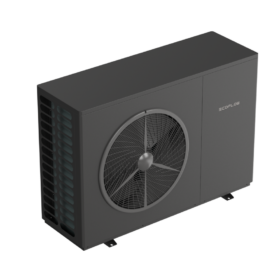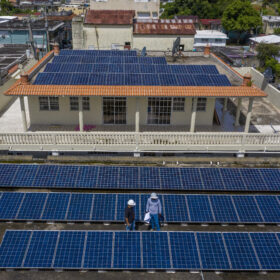Topaz paid up by PG&E – The owners of the Topaz Solar plant report that they have been fully paid by utility PG&E for electricity generated during March. Our take: There has been a great deal of skepticism about whether or not PG&E would pay on legacy solar contracts, given that the utility’s lawyers have worked hard to ensure that it has the option of shedding these contracts in its bankruptcy process. This is good news for the owners of Topaz and its credit rating, as well as those of other solar projects, but we’ll see if this trend continues as PG&E moves through its bankruptcy. Source: Topaz Solar Farms LLC
New York City’s MTA to lease rooftops for solar plants – The Metropolitan Transportation Authority (MTA), which operates New York City’s iconic subway as well as regional rail and busses, has issued a series of RFPs for developers to build solar on the roofs of properties that it owns. In its first round the company will lease out space on seven buildings, but MTA says that it has identified more than 100 locations on bus depots, train yards and commuter lots which are suitable for solar, totaling around 10 million square feet. Source: Crain’s New York Business
SCE to replace gas peaker with batteries – Southern California Edison (SCE) has switched plans, and is now seeking approval to contract with a 100 MW/400 megawatt-hour (MWh) battery system to be built by Strata Solar to meet local capacity needs near the city of Oxnard, California. This would terminate its arrangement with the 262 MW Puente gas plant for the provision of these services. Source: Greentech Media
Coffee helps thermal stability of perovskites – “Scientists at the California NanoSystems Institute at UCLA have found that caffeine improves the stability of materials under heat – a property known as thermal stability — of perovskite solar cells, which could someday replace traditional silicon-based solar cells. The research, published today in the journal Joule, was led by Yang Yang, UCLA’s Carol and Lawrence E. Tannas Jr. Professor of Engineering.” Source: UCLA
As any solar professional knows, solar power owners tend to push their systems toward the end of the year in order to verify tax benefit status and to get closer to when you can claim that benefit, as well to get the lowest prices possible. EIA data shows that this trend is quite clear:

This content is protected by copyright and may not be reused. If you want to cooperate with us and would like to reuse some of our content, please contact: editors@pv-magazine.com.








By submitting this form you agree to pv magazine using your data for the purposes of publishing your comment.
Your personal data will only be disclosed or otherwise transmitted to third parties for the purposes of spam filtering or if this is necessary for technical maintenance of the website. Any other transfer to third parties will not take place unless this is justified on the basis of applicable data protection regulations or if pv magazine is legally obliged to do so.
You may revoke this consent at any time with effect for the future, in which case your personal data will be deleted immediately. Otherwise, your data will be deleted if pv magazine has processed your request or the purpose of data storage is fulfilled.
Further information on data privacy can be found in our Data Protection Policy.